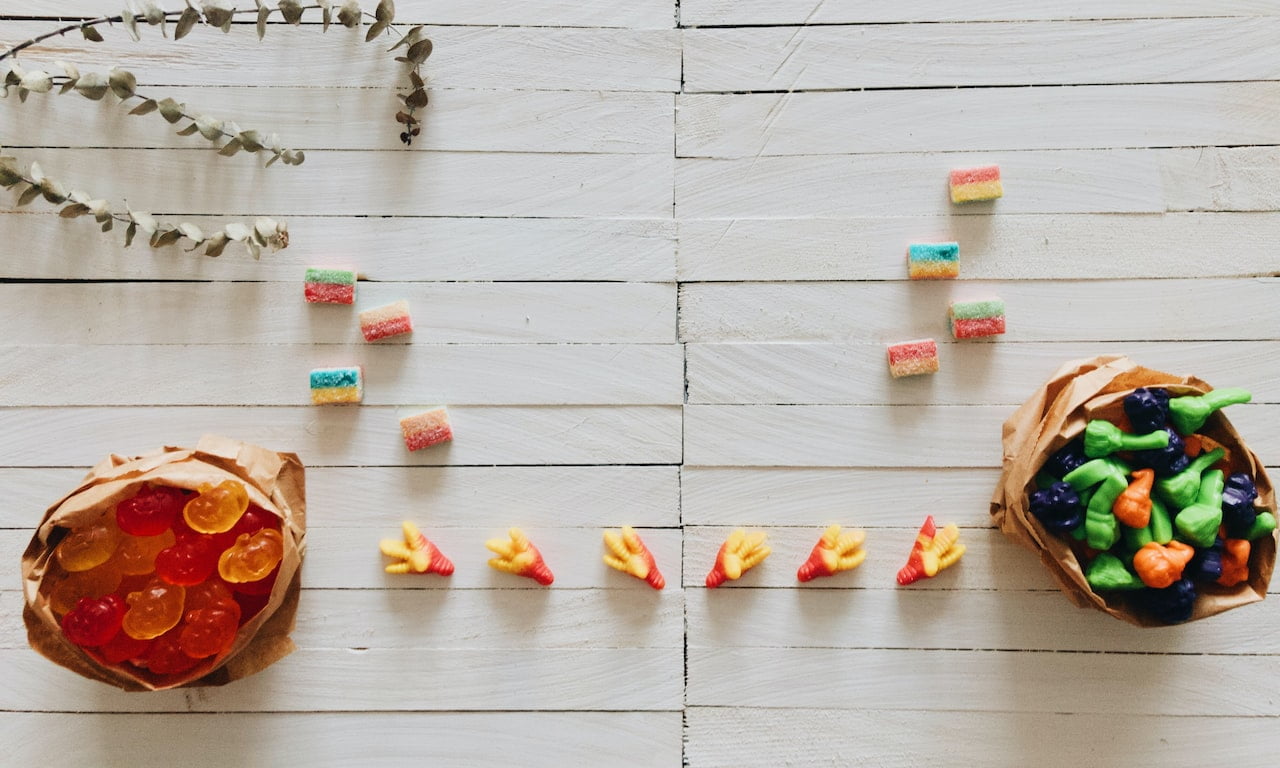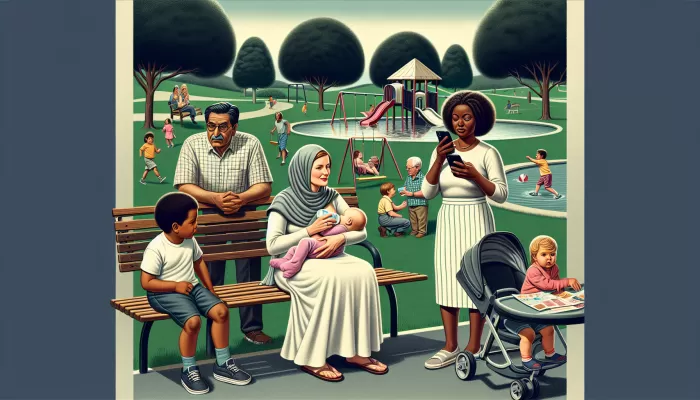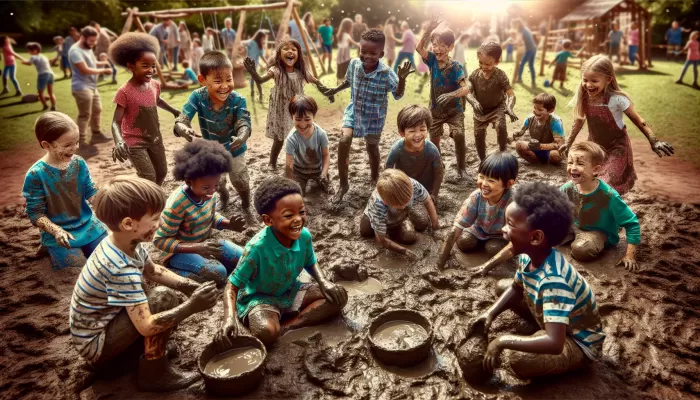Santa Claus: The Jolly Gift-Giver
Overview of Santa Claus
Santa Claus, also known as Saint Nicholas, Kris Kringle, or simply Santa, is a legendary and iconic figure associated with Christmas. This beloved character is deeply ingrained in popular culture and holds a special place in the hearts of children and adults alike. The origins of Santa Claus can be traced back to various historical and mythical figures throughout different cultures.
Origin and Evolution of Santa Claus
The legend of Santa Claus is a fascinating amalgamation of different traditions and stories from around the world. One significant influence on the development of this beloved character comes from Saint Nicholas, a Christian bishop who lived during the 4th century in what is now modern-day Turkey.
Known for his generosity towards children and the poor, Saint Nicholas became associated with gift-giving. Over time, various cultural influences shaped the image of Santa Claus we know today.
In the 19th century, the American writer Washington Irving depicted ‘Sinterklaas,’ a Dutch figure with similarities to Saint Nicholas. Additionally, Clement Clarke Moore’s poem ‘A Visit from St. Nicholas’ (commonly referred to as ‘The Night Before Christmas’) introduced elements such as reindeer-pulled sleighs and chimneys.
Cultural Significance and Global Variations
Santa Claus transcends cultural boundaries and has become an international symbol of holiday cheer. While he may go by different names or appear in slightly varied forms across cultures, his essence remains unchanged – that of spreading joy through gift-giving during Christmas. For example, in many European countries like Germany and Austria, they celebrate ‘Weihnachtsmann’ or ‘Christkind,’ who brings gifts on Christmas Eve.
In parts of Latin America, it’s ‘Pap¨¢ Noel’ who delivers presents to children on Christmas Day. The cultural diversity of Santa Claus showcases how this figure has been embraced and adapted by different societies, adding unique flavors to the festivities.
The Legend of Santa Claus
The legend of Santa Claus has been shaped by the rich tapestry of historical figures and mythical characters who embody generosity, kindness, and good cheer. One such figure is Saint Nicholas, a devout Christian bishop known for his secret gift-giving and compassion towards those in need.
His selfless acts of charity inspired generations to continue his legacy. Another significant influence on the legend is Father Christmas in England, depicted as a bearded man wearing green robes who embodied the spirit of merriment during the winter festivities.
Similarly, Odin, a Norse god associated with wisdom and magic, played a part in shaping aspects like Santa’s long white beard and his connection to reindeer. The modern image of Santa Claus took shape in the United States during the 19th century when various cultural elements merged together.
The iconic red suit trimmed with white fur, the round belly that jiggles like a bowl full of jelly – all these characteristics became synonymous with Santa Claus through books, illustrations, and advertisements. Santa Claus is recognized for his joyful demeanor, boisterous laughter (often described as ‘ho ho ho’), and charitable nature.
He embodies the spirit of altruism and encourages us to embrace kindness towards others during the festive season. By understanding the origin and evolution of Santa Claus alongside his cultural significance worldwide, we can delve deeper into this enchanting character’s essence as both an enduring mythological figure and a symbol synonymous with holiday celebrations across different cultures.
Cookies: Sweet Treats for Santa’s Visit
Ancient Origins of Cookie Baking Traditions
The delightful tradition of baking cookies during the Christmas season has a long and fascinating history that dates back to ancient times. The concept of baking small, sweet treats can be traced back to the early Egyptians, who used honey and nuts to create simple cookie-like pastries. These early cookies were often shaped into symbols representing various aspects of life, such as fertility and rebirth.
As time went on, the tradition of cookie baking spread throughout Europe. In medieval times, it became popular to exchange small, spiced cakes as tokens of good luck and prosperity during festive celebrations.
These cakes were often intricately decorated with religious symbols or family crests. Over time, these early forms of cookies evolved into what we know today as traditional Christmas cookies.
Evolution of Christmas Cookie Recipes Over Time
Christmas cookie recipes have evolved significantly over the centuries, influenced by cultural traditions and culinary innovations. As trade routes expanded during the Age of Exploration, new ingredients from different parts of the world began making their way into European kitchens.
This led to exciting discoveries in baking techniques and flavor combinations. One iconic example is the classic sugar cookie with decorative icing.
Sugar cookies gained popularity in Europe during the 17th century when refined sugar became more accessible. Bakers started experimenting with different shapes and designs, using molds or hand-cutting techniques to create intricate patterns on their cookies.
To perfect your sugar cookie dough, it’s essential to pay attention to a few key tips. First, ensure that your butter is softened but not melted before creaming it with sugar ¨C this will help achieve a light texture in the final baked product.
Additionally, chilling the dough for at least an hour before rolling it out will make it easier to handle and prevent excessive spreading while baking. When it comes to creative icing techniques, options abound.
One popular method is flooding, where the entire surface of the cookie is covered with a thin layer of icing before adding more intricate details on top. Another technique is piping, using a small piping bag or ziplock bag with a corner snipped off to create beautiful designs and patterns.
Adding edible decorations like sprinkles or colored sugars can further enhance the festive look of your sugar cookies. Gingerbread cookies also hold a special place in the hearts of Christmas enthusiasts.
These spiced delights have been enjoyed for centuries and are known for their distinctive flavor and charming shapes. The history of gingerbread can be traced back to ancient Greece and Rome when honey was used as a sweetener along with ginger.
Traditional gingerbread recipes often include molasses or treacle, which give the cookies their deep, rich flavor and dark brown color. The added spices like cinnamon, nutmeg, cloves, and ginger lend warmth and complexity to each bite.
In some cultures, gingerbread cookies are even associated with folklore and symbolism, representing protection against evil spirits or serving as tokens of love. To bring your gingerbread cookies to life, there are numerous decorating ideas you can explore.
Royal icing is commonly used as it dries hard and acts as an excellent canvas for intricate designs. Consider adding small details like piped icing borders or creating dimension by using different colors and textures.
For an added touch of whimsy, use candies or edible decorations to accentuate your gingerbread creations ¨C think mini chocolate chips for eyes or licorice strings for arms. Christmas cookies have a rich history that spans centuries and cultures around the world.
From ancient Egyptian pastries to beautifully decorated sugar cookies and intricately spiced gingerbread treats, these sweet delights play an integral role in holiday traditions across many households today. So next time you embark on your baking adventure during the festive season, remember the origins behind these delectable treats and embrace the creativity they allow.
Elves: Santa’s Loyal Helpers in the Workshop
Mythology and Folklore Surrounding Elves
Elves, mythical beings often depicted as small, magical creatures with pointy ears and a mischievous demeanor, have captivated our imaginations for centuries. The origins of elf folklore can be traced back to various cultures around the world. In Norse mythology, elves were believed to be a type of supernatural being closely associated with nature and skilled in magic.
They were considered guardians of forests and were said to possess an otherworldly beauty. In Celtic folklore, elves, or ‘sidhe’ as they are known in Irish mythology, were seen as humanoid entities residing in parallel realms, often described as ethereal beings who could bring good fortune or cause mischief.
Similarly, Germanic folklore portrayed elves as small magical creatures dwelling in forests and meadows. These ancient traditions laid the foundation for the modern-day depiction of elves as Santa’s loyal helpers.
The Role of Elves in Popular Culture
1. Depictions in Literature, Movies, and Art: From classic fairy tales such as ‘The Shoemaker and the Elves’ to J.R.R. Tolkien’s epic fantasy novels like ‘The Lord of the Rings,’ elves have played prominent roles throughout literature. They are often portrayed as wise, agile beings with exceptional craftsmanship skills.
In these stories, they serve not only as Santa’s workshop assistants but also fulfill diverse roles like warriors or guardians. Movies have also introduced audiences to various interpretations of elves.
The iconic portrayal by actor Orlando Bloom as Legolas Greenleaf in Peter Jackson’s film adaptations of Tolkien’s works showcased their agility and archery prowess on the big screen. Moreover, numerous art forms celebrate elf aesthetics through captivating illustrations that highlight their delicate features and enchanting allure.
2. Imaginative Interpretations of Modern-Day Elves: Modern culture has taken the concept of elves and expanded upon it, creating new and imaginative interpretations.
In fantasy role-playing games such as Dungeons & Dragons, elves are often portrayed as elegant and immortal beings with exceptional magical abilities. They become playable characters for gamers to embody, adding a touch of mysticism to their adventures.
In contemporary art, artists have reimagined elves in unique ways, blending traditional folklore with modern elements. Some artists depict cyberpunk or futuristic versions of elves, showcasing their adaptability across different genres.
These reinterpretations invite us to explore the depths of our imagination and contemplate the evolving nature of these mythical creatures in our ever-changing world. Overall, elves hold a significant place in both ancient mythology and modern popular culture.
Their rich folklore origins from different cultures have shaped our perceptions of these magical beings. Whether they’re depicted as Santa’s helpers or captivating characters in literature and art, elves continue to capture our fascination with their enduring presence in our collective imagination.
Candy Canes: Sweet Stripes on the Christmas Tree
History and Symbolism Behind Candy Canes
Candy canes have become an integral part of the Christmas season, adorning trees, stockings, and holiday decorations. But have you ever wondered how these delightful treats came to be? The origins of candy canes trace back to the late 17th century when simple sugar sticks were created as a way to keep children entertained during long church services.
These early versions were straight and devoid of any flavor or color. Over time, candy canes gained popularity as their shape transformed into a curved hook, symbolizing shepherds’ crooks from biblical tales.
The red-and-white stripes we associate with candy canes emerged in the early 20th century. Legend has it that a German choirmaster wished to create a candy that represented Christmas.
He added peppermint flavoring and twisted them into hooks, symbolizing the shepherds who visited baby Jesus. From then on, the iconic peppermint candy cane became synonymous with holiday joy.
Fun Facts about Candy Canes
Beyond their historical significance and symbolism, candy canes offer intriguing tidbits that add to their allure. The manufacturing process of these delectable treats involves precision and craftsmanship from start to finish. To create a perfectly shaped cane, hot sugar syrup is stretched using special machines while additives like flavorings and colors are carefully incorporated.
Additionally, lesser-known flavors beyond traditional peppermint have emerged in recent years, offering exciting alternatives for those seeking unique taste experiences during the holiday season. From fruity delights like cherry and watermelon to unconventional flavors like bacon or pickle-flavored candy canes, there’s something for everyone’s palate.
Intriguingly enough, some regions even boast giant-sized candy canes weighing several pounds for those who truly embrace the holiday spirit. These oversized delights add a whimsical touch to festivities, becoming a centerpiece in holiday displays and serving as a mouthwatering challenge for candy enthusiasts.
Conclusion
As we delve into the captivating history and delightful facts surrounding candy canes, it becomes clear that these striped confections hold far more significance than meets the eye. From their humble beginnings as simple sugar sticks to their evolution into iconic peppermint treats, candy canes have become an indelible part of Christmas traditions worldwide.
The red-and-white stripes and their curved shape remind us of the joyous shepherds who visited baby Jesus, infusing our celebrations with a sense of wonder and merriment. As you savor the sweet flavor of a candy cane this holiday season, let it serve as a reminder to embrace the spirit of giving, kindness, and joy that defines this time of year.
Amidst the busyness and stress that often accompany the holidays, may the sight and taste of a candy cane transport you back to simpler times filled with childlike wonder. So go ahead, hang those sweet stripes on your Christmas tree or share them with loved ones ¨C for in each bite lies a little bit of magic that keeps the festive spirit alive.











